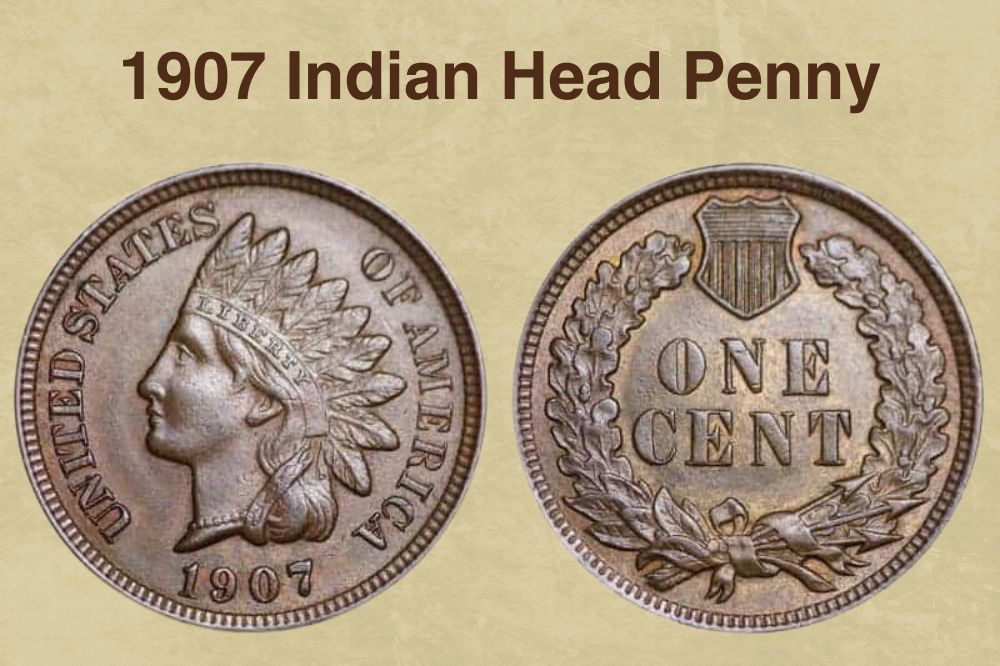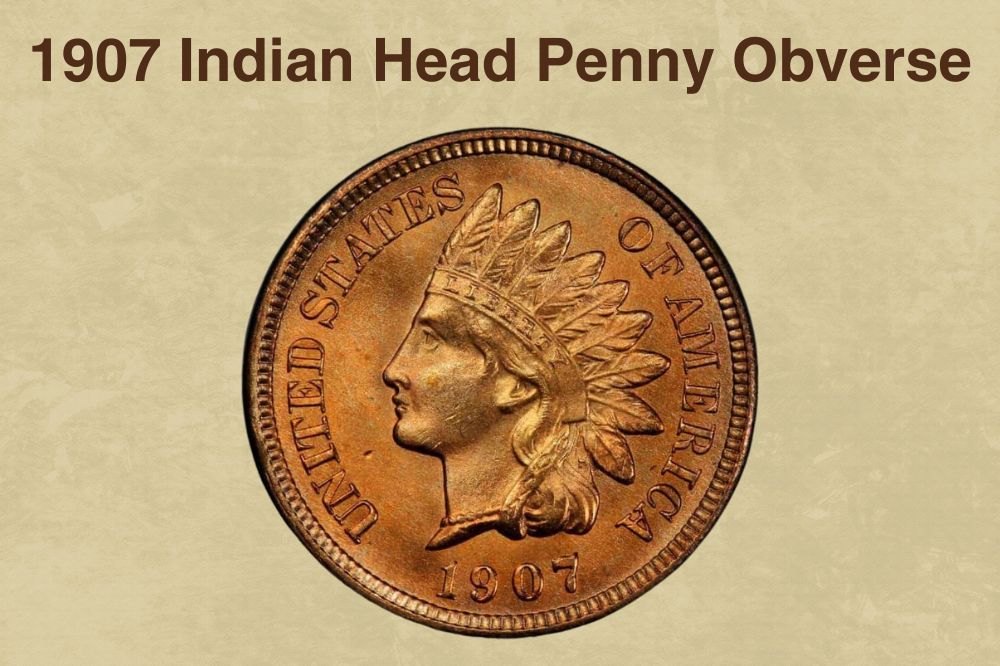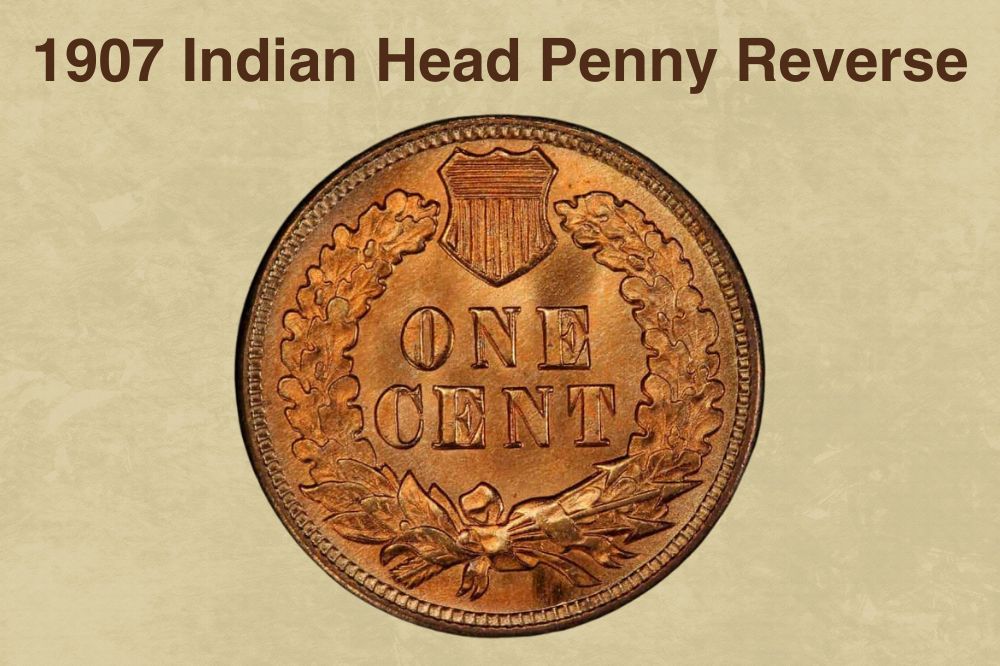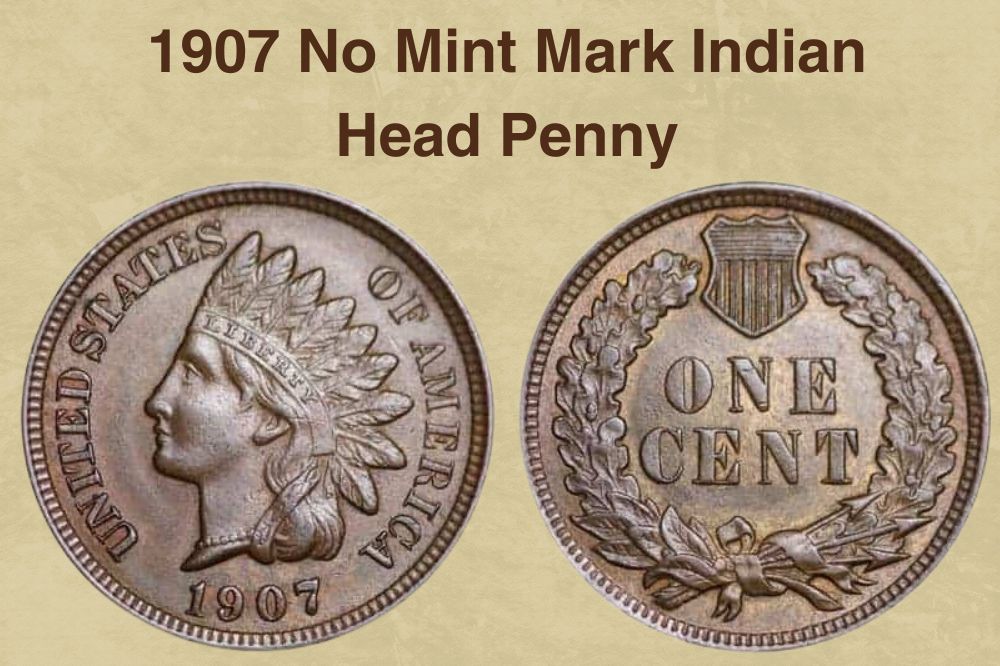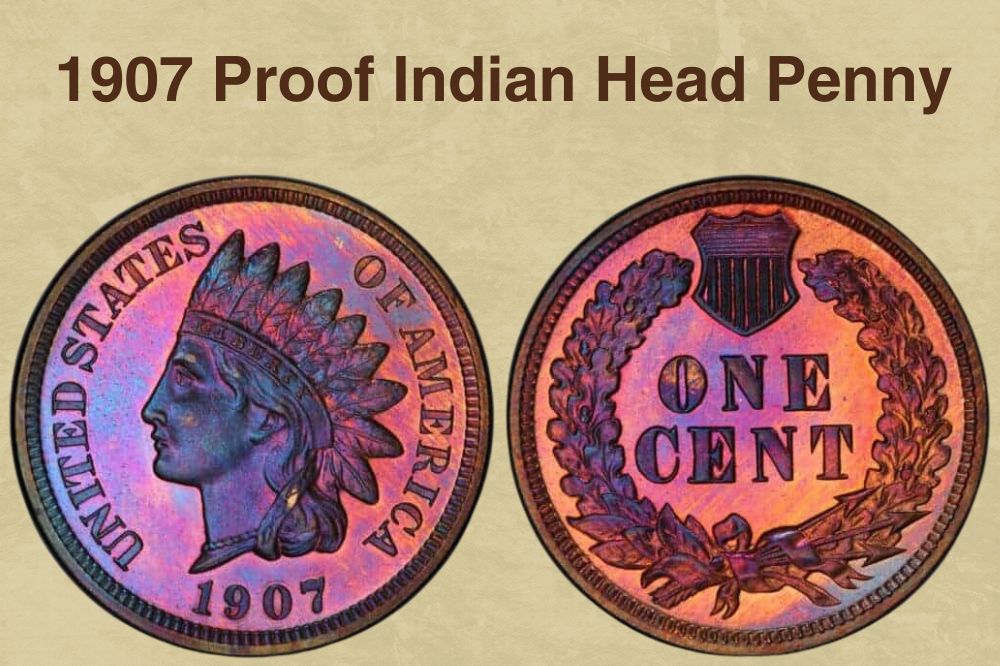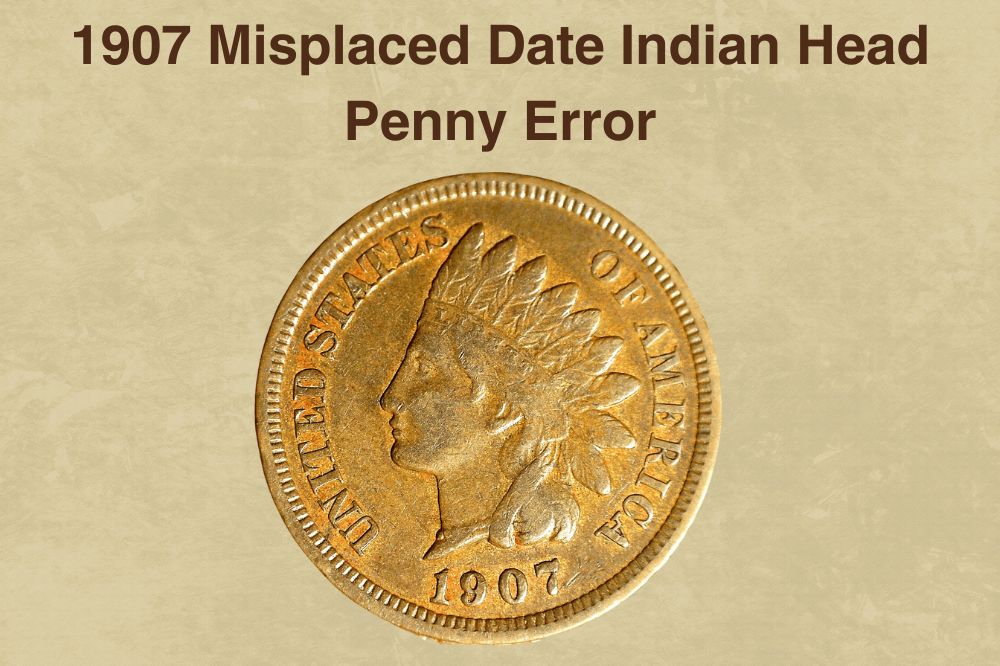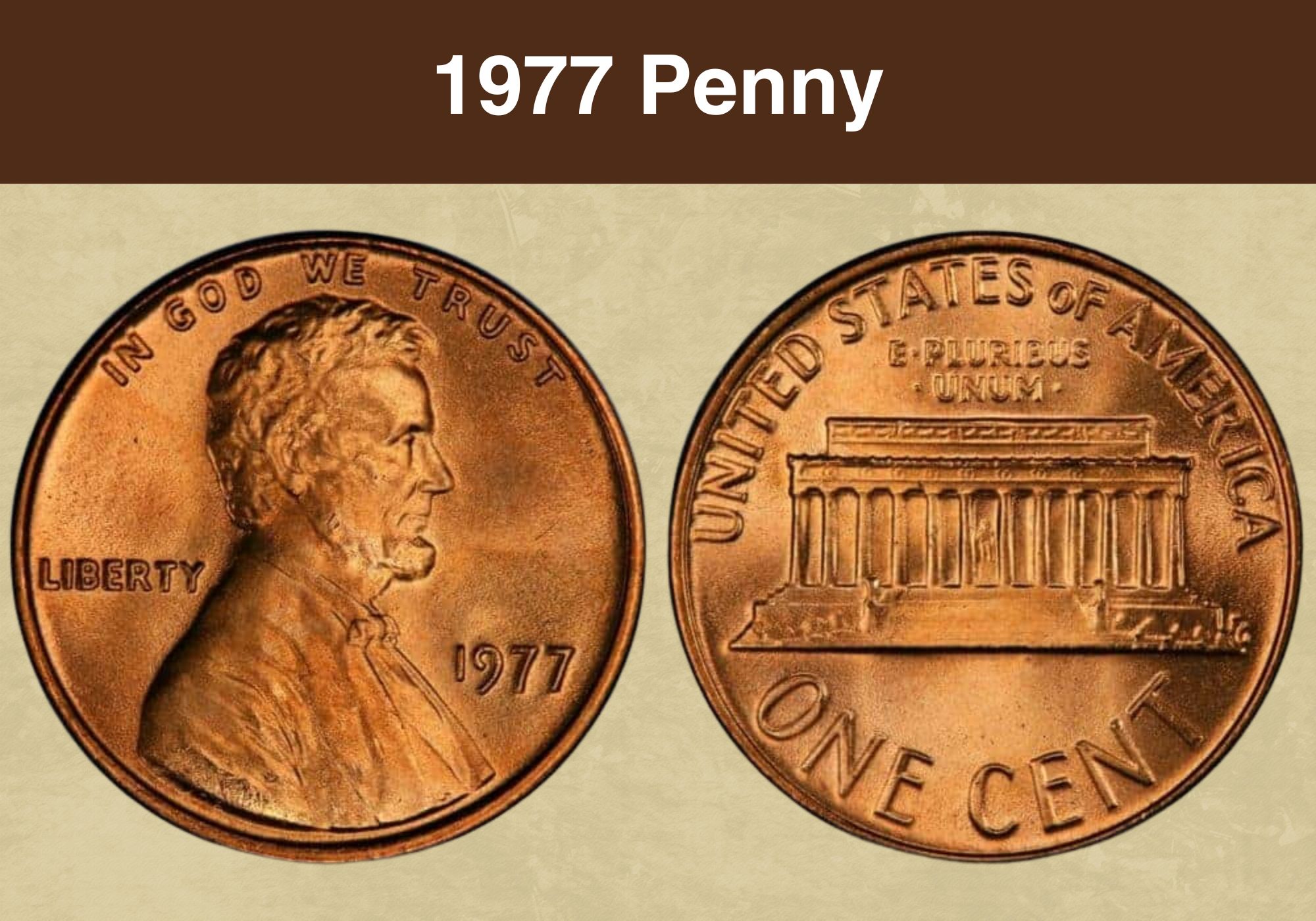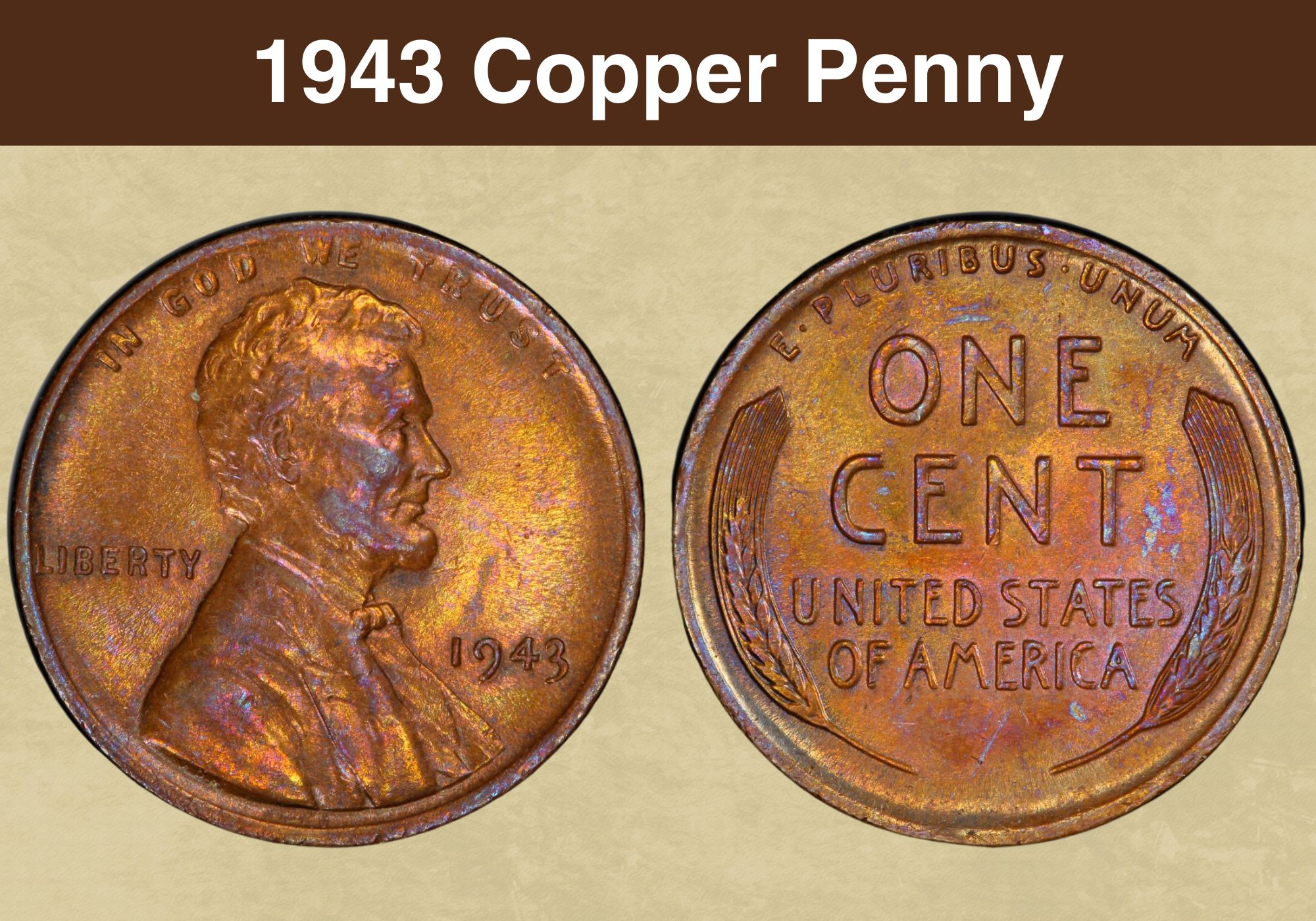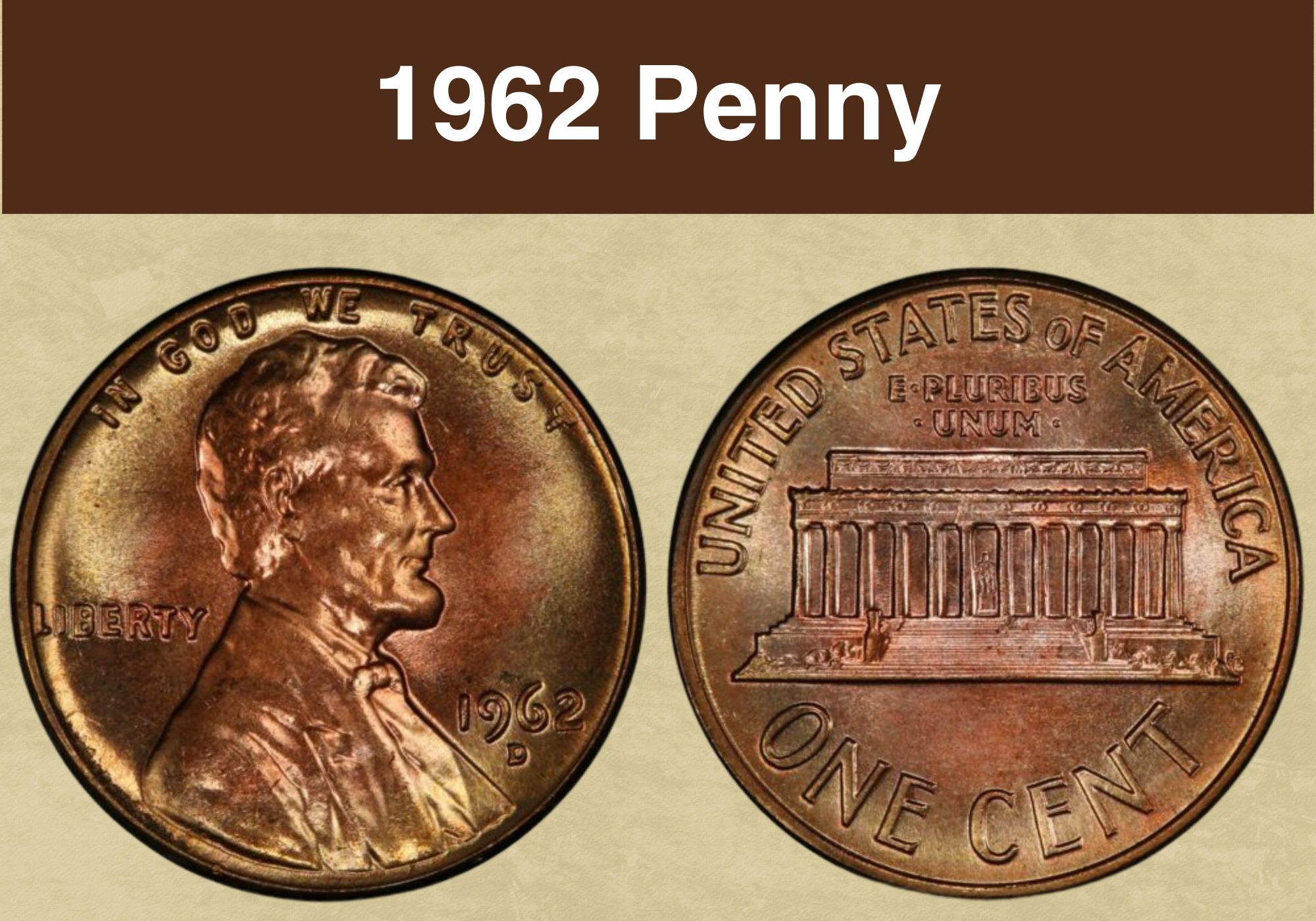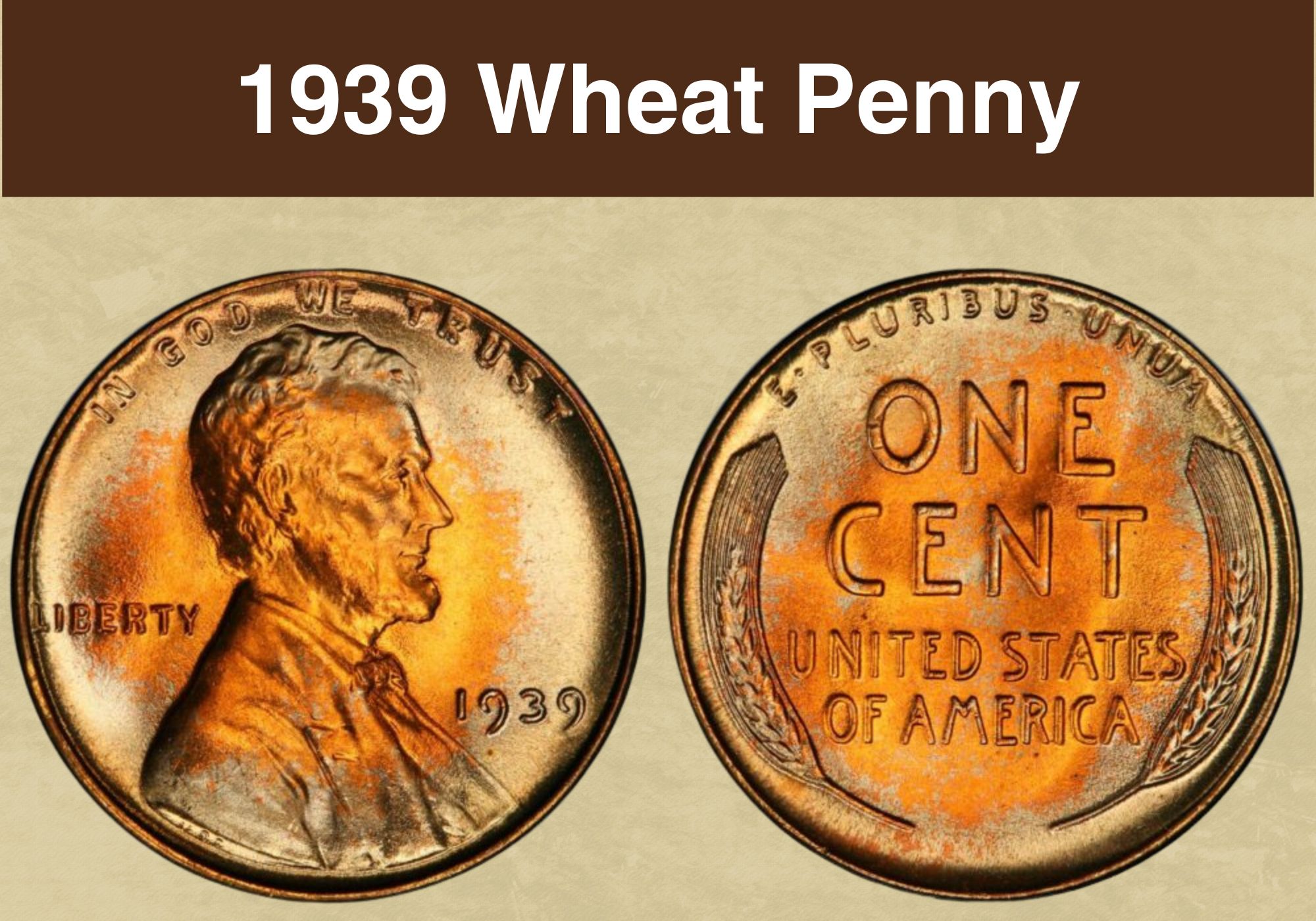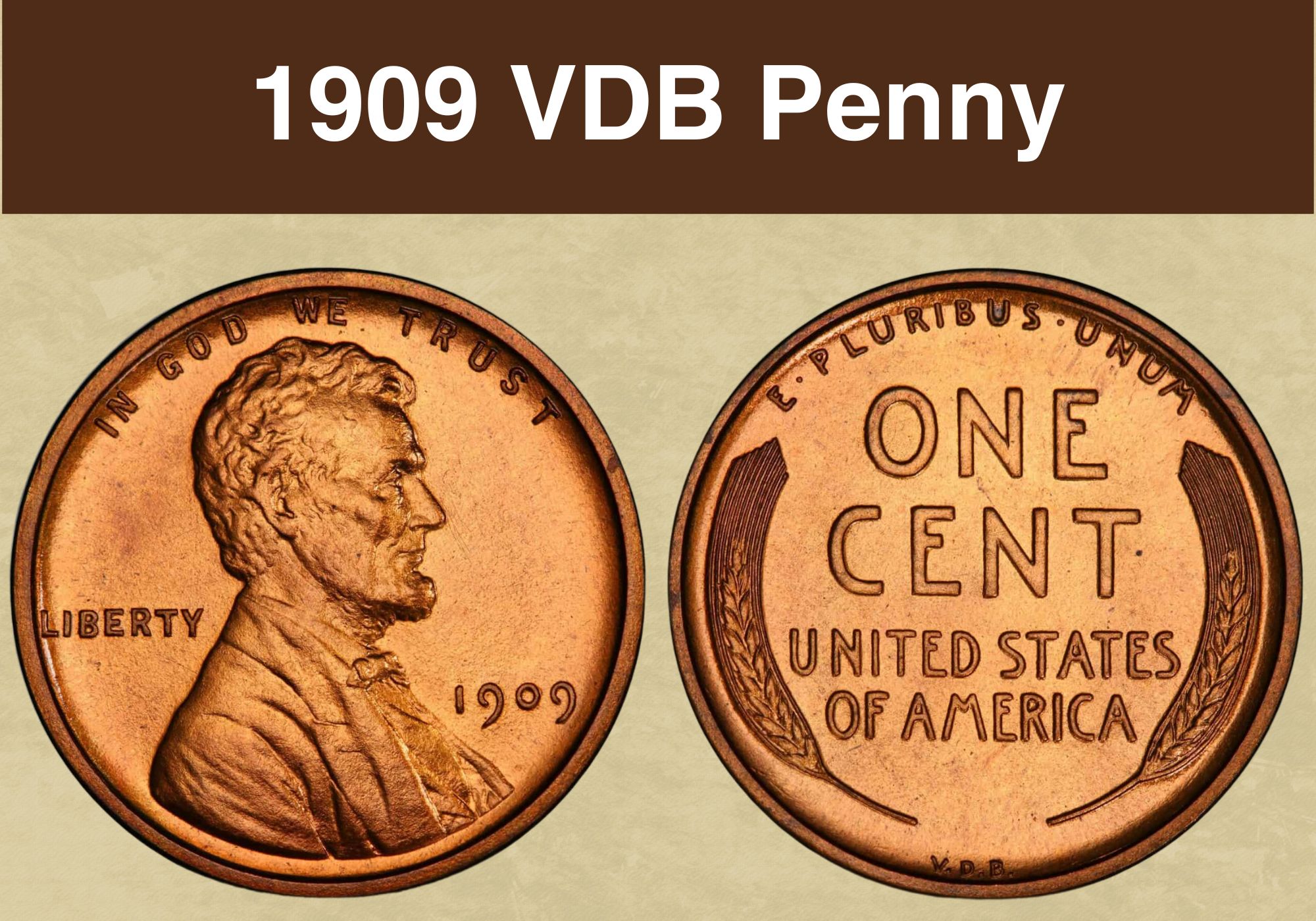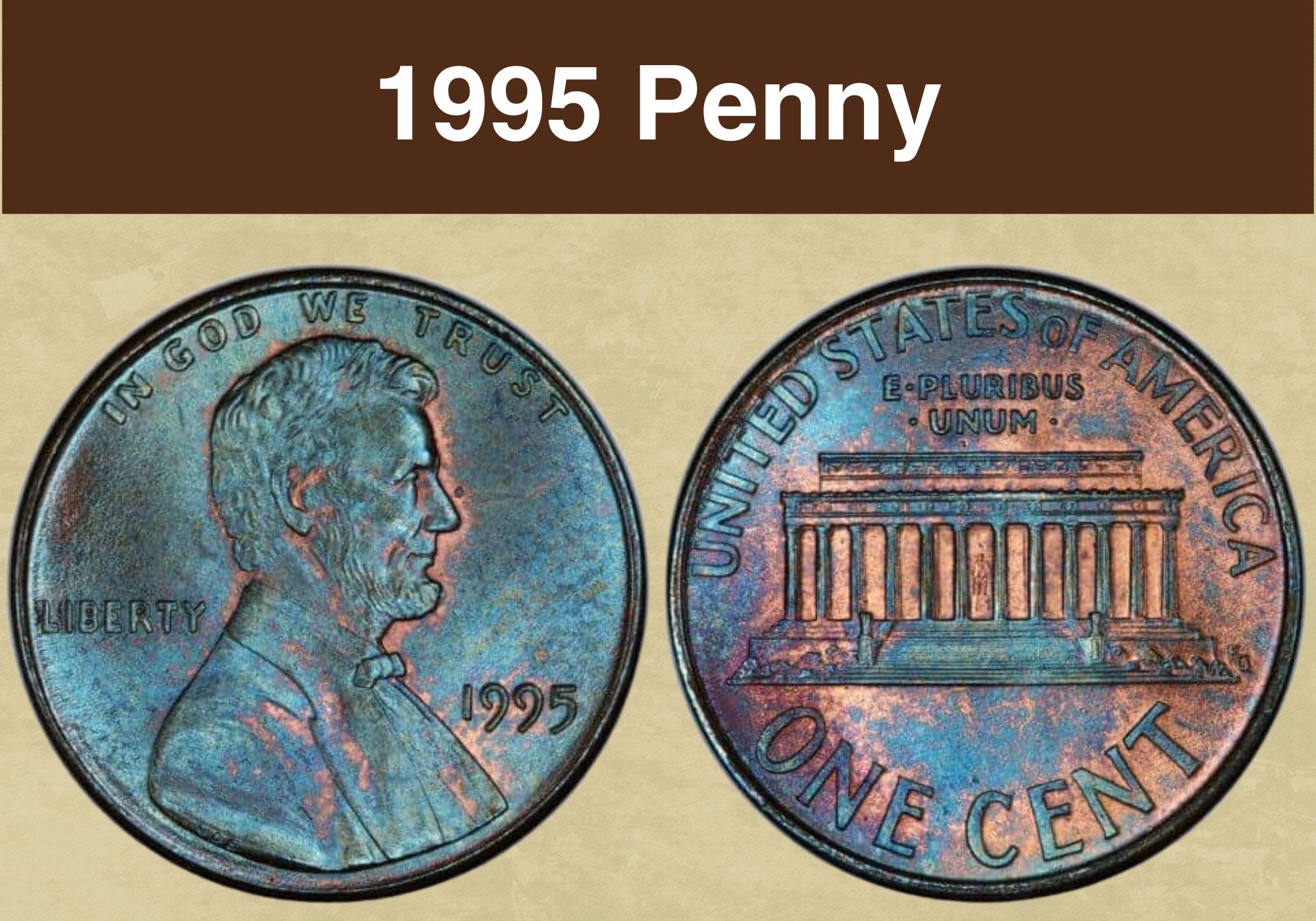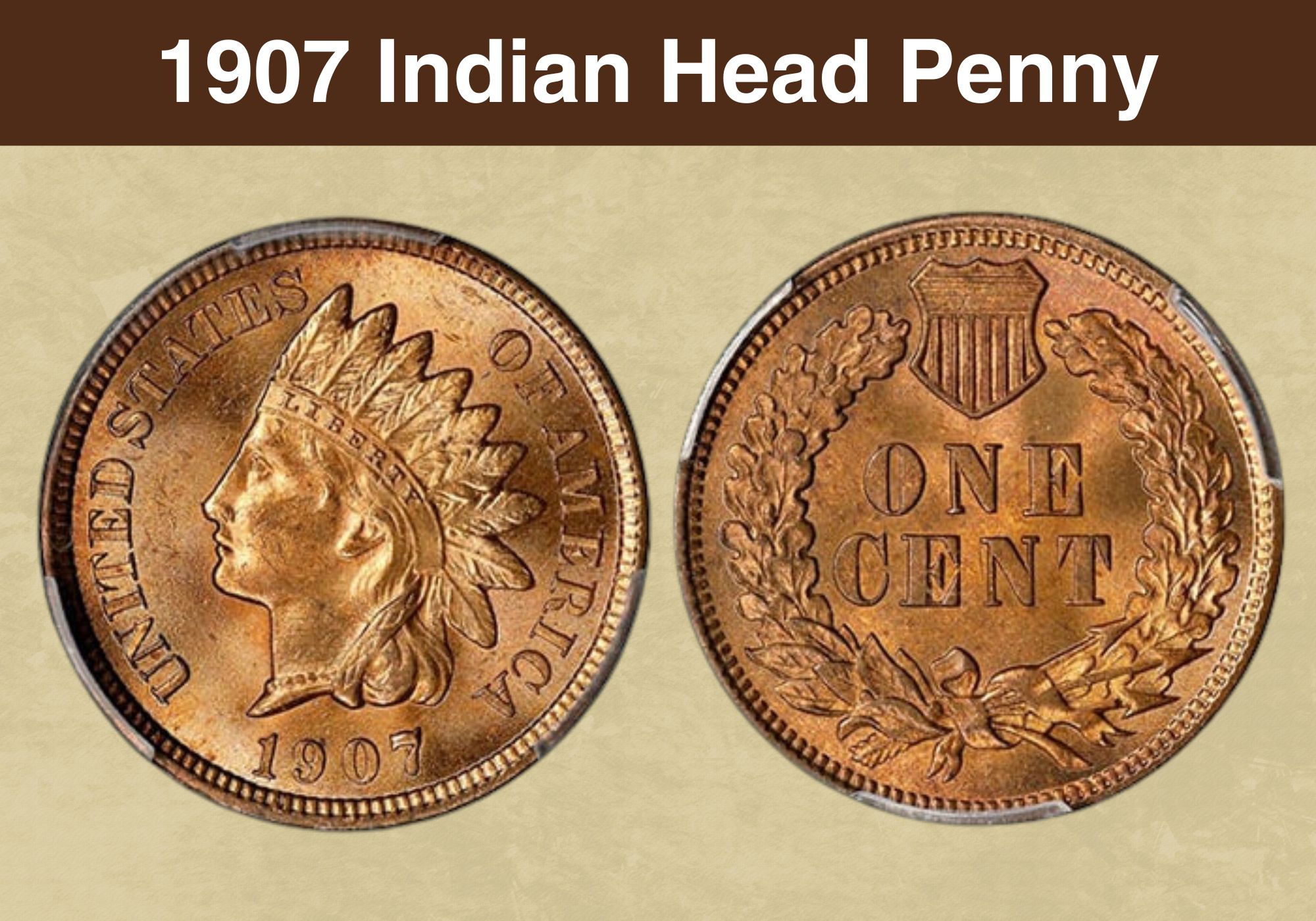
Coin Value Contents Table
- 1907 Indian Head Penny Value Chart
- History of the 1907 Indian Head Penny
- Features of the 1907 Indian Head Penny
- 1907 Indian Head Penny Grading
- 1907 Indian Head Penny Value Guides
- 1907 No Mint Mark Indian Head Penny Value
- 1907 Proof Indian Head Penny Value
- Rare 1907 Indian Head Penny Errors List
- Where to Sell Your 1907 Indian head penny ?
- FAQ
Do you own a 1907 Indian head penny and are curious about its worth?
Or are you considering adding a 1907 Indian head penny to your collection?
The Indian head is the most popular penny after the Lincoln penny, with collectors eager to add this charming coin to their collections.
The year 1907 is especially significant because it was the first time the production of Indian head cents surpassed the 100 million mark.
As an old coin, the value of your 1907 Indian head penny will largely depend on its condition.
This guide will help you understand how to value your Indian head penny. You will also discover some errors to look out for that might increase the value of your old penny.
So, let’s get started and find out just how much a 1907 Indian head penny is worth.
1907 Indian Head Penny Value Chart |
||||
| Mint Mark | Good | Fine | Extremely Fine | Uncirculated |
| 1907- No Mint Mark Indian Head Value | $2 | $4 | $15 | $400 |
| 1907 Proof Indian Head Value | – | – | – | $2,200 |
History of the 1907 Indian Head Penny
The United States Mint produced the Indian Head cent from 1859 to 1909, with production reaching the 100 million mark in 1907.
The original coin underwent several changes over the years, mostly in response to world metal prices. The first of these changes began in 1857 when the Mint changed the cent’s metal composition from 100% copper to 88% copper and 12% nickel and also reduced the coin’s size due to the increasing copper prices. These new coins were known as the Flying Eagle cent and were the first to be minted using a copper-nickel alloy.
In 1858, the Mint replaced the Flying Eagle design with the Indian head. The former proved difficult to mint, forcing the U.S. Mint to opt for an easier design, which included a laurel wreath on the reverse. An oak wreath and shield replaced the laurel wreath in 1860.
At the peak of the American Civil War, people hoarded cents, and at the same time, the supply of nickel metal was dwindling, making it expensive to strike new coins to meet coin demand. The Mint, therefore, opted to change the cent’s metal composition to a bronze alloy.
Philadelphia’s chief coin engraver, James Barton Longacre, designed the Indian head penny that circulated from 1859 to 1909. The coin was extremely popular since its inception, with the mint striking a large number each year to meet demand.
Also read: 12 Most Valuable Lincoln Penny Worth Money
Features of the 1907 Indian Head Penny
Familiarizing yourself with the features of Indian head pennies will help you identify errors and whether your coin is worth anything.
The Obverse of the 1907 Indian Head Penny
This coin derives its name from the obverse design which features Lady Liberty adorned in a traditional Native Indian headdress.
The Indian head penny was the first currency in United States history to depict American Indian culture, adding to the coin’s desirability among hobbyists.
The left-facing Liberty also spots a headband holding the headdress in place. The word LIBERTY is shown on the headband.
The words UNITED STATES appear along the coin’s left rim, while OF AMERICA is shown along the right rim. The date 1907 appears at the bottom along the rim.
The Reverse of the 1907 Indian Head Penny
The reverse of the 1907 Indian head penny features a beautiful design composed of an oak wreath with arrows daintily tied at the bottom using an elegant ribbon.
A shield appears at the top of the coin while the coin’s denomination, ONE CENT, is centrally placed on the coin.
Theh early Indian head pennies depicted a laurel wreath, but this design proved too difficult to mint and was replaced by the simpler oak wreath, which remained intact until the coin’s demise in 1909.
Other Features of the 1907 Indian Head Penny
The 1907 Indian head cent is relatively lightweight, weighing just 3.11 grams and measuring 19.00 milimeters.
The coin’s metal composition comprises 95% Copper, 5% Tin and Zin. Since copper is the predominant metal, some Indian head pennies might appear brown with a greenish luster while others might have a light red luster.
Browned Indian head pennies are generally worn and aren’t popular among collectors as the coins are exposed to the elements and are considered worn. Red pennies are the most desirable but are extremely rare on this date.
Also read: 13 Most Valuable Wheat Penny Worth Money
1907 Indian Head Penny Grading
Grading Indian head cents, including the ones minted in 1907, entails evaluating the coin for wear.
Because Indian head pennies are old and highly circulated in all grades, it is best to pay more attention to uncirculated pieces as they are more profitable.
Uncirculated Indian head pennies should have no or very minor wear to the surface. Check under a single light to ensure that the coin radiates rings of luster.
The luster should be intact on high points, such as Liberty’s cheek underneath her eye. You should also examine the lower chin and jaw and the hair curls falling on her shoulders.
On the reverse, pay attention to how the light moves over the ribbon knot and the leaf edges in the wreath. Examine the texture of the large ONE CENT lettering in the middle; the lettering should feel grainy and luster visible; smoothening is a sign of wear and such pieces may not be worth considering for any serious collector.
These spots on the obverse and reverse are prone to wear, but all the details should be intact in uncirculated 1907 Indian head cents.
| # | Grade |
|---|---|
| 1 | Basal State-1 |
| 2 | Fair |
| 3 | Very Fair |
| 4, 5, 6 | Good |
| 7, 8, 10 | Very Good |
| 12, 15 | Fine |
| 20, 30 | Very Fine |
| 40 | Extremely Fine |
| 50 | About Uncirculated |
| 60 | Mint State |
| 65 | Mint State |
| 70 | Mint State |
Please check our grading guides to know your coin scale, It’s the necessary step to know the exact value of your coin.
Check out now: How to Grade Indian Head Penny?
1907 Indian Head Penny Value Guides
So, how much is the 1907 Indian head penny worth?
Whether your Indian head cent is worth money depends on the coin’s condition. Because the 1907 Indian head penny is so old, the physical condition is usually the most important factor in determining how much the coin might be worth.
The 1907 Indian head penny stands out for two reasons, making it desirable among collectors. For one, it had the largest mintage of all Indian head pennies. Secondly, the coins were only struck at the Philadelphia minting facility.
Let’s explore the value of the 1907 Indian Head penny variety.
1907 No Mint Mark Indian Head Penny Value
The Philadelphia minting facility struck about 108,137,143 Indian head pennies in 1907, and most were released into circulation. This was the first time the production of Indian head cents surpassed the 100 million mark.
With so many coins released into circulation, the 1907 Indian head pennies are relatively common, although most are found in lower grades.
Fully red gems are desirable, but these are extremely rare and sell at a premium when they occasionally come up for auction.
It is worth noting that since 1907 Indian head pennies were struck only at the Philadelphia facility, these coins do not feature an identifying mint mark.
Expect between $2 and $35 for 1907 Indian head pennies in lower grades ranging from good to about uncirculated (AU). The most expensive brown specimen, graded MS66, was sold for $900 at 2022
The price increases exponentially for pieces in mint state, with an MS60 example fetching up to $40, while one graded MS66 in gem quality can fetch as much as $400.
In 2019, Heritage Auctions sold what is considered the most expensive 1907 Indian head penny to date. The red, gem-quality specimen graded MS67+ fetched a mind-boggling $63,000, an unparalleled record.
1907 Proof Indian Head Penny Value
In addition to regular issue pennies, the Philadelphia mint also struck proof coins for collectors. About 1,475 proof Indian head pennies were minted in 1907, making this the lowest mintage in the entire Indian head penny series.
Most 1907 proof Indian head pennies were saved, so there are hundreds of existing survivors todate, with many specimens demonstrating a red-brown surface with a brilliant luster. You will easily obtain examples in PF63 to PF65.
The population of 1907 proof Indian head pennies begins to dwindle in PF66, with few than 100 examples known to exist. The population continues to shrink as you go higher up the ladder. There are fewer than a dozen existing examples graded PF67.
Your brown 1907 proof Indian head penny will fetch you at least $200 on the lower end for PF60 pieces and up to $2,200 for specimens graded PF67. One brown example graded PF67 was sold for a whopping $5,518 at a 2013 Heritage Auctions sale.
Fully red gem-quality pieces in cameo or deep-cameo are the most desirable but extremely rare. A PF62 will bring about $250, while one graded PF67 can score up to $10,500.
The most expensive red 1907 proof Indian head penny was sold by Legend Rare Coin Auction. This specimen was graded PF67 and brought $22,913 at the end of the auction.
Also read: 17 Most Valuable Indian Head Penny Worth Money
Rare 1907 Indian Head Penny Errors List
Despite the high mintage, Indian head pennies, including those minted in 1907, are surprisingly well-struck. Errors found in the Indian head penny series are minor, but some are worth good money.
Here are some 1907 Indian head errors worth looking out for:
1907 Die Cud Indian Head Error
A die cud error occurs when a part of the die breaks away, creating a small hole.
Unlike a die crack, a cud only occurs if there is a vertical and horizontal displacement of a part of the die. This displacement is therefore imprinted on the planchet during the striking process.
Die cuds visible to the naked eye are more desirable. This error appears on the obverse and reverse of the 1907 Indian head coins and will fetch about $100.
1907 Misplaced Date Indian Head Error
Misplaced date errors are the most common among Indian head coins, including the 1907 series. This error is also very popular among collectors looking to complete their Indian head penny collection.
As the name suggests, a misplaced date error occurs when the date does not appear on the correct spot on the coin. Instead, the date appears slightly off from its original location.
In the case of the 1907 Indian head penny, the date should appear around the bottom of the rim right below Liberty’s neck. But in error coins, you will notice that the date is slightly aligned to the right side.
A 1907 misplaced date Indian head error is quite fascinating, and it is no surprise that it would fetch up to $250 or more for pieces in mint state.
1907 Doubled Die Indian Head Error
Doubled due errors are common and occur when the die strikes the coin design at different angles, resulting in visible doubling.
In the 1907 Indian head penny, doubling is visible mostly on the reverse of the oak leaves. There is also a slight doubling on the obverse on the words UNITED STATES OF AMERICA and the date.
Doubled die errors on a 1907 Indian head penny can cost $150 or more, depending on the coin’s condition.
Also read: 11 Most Valuable Wheat Penny Errors
Where to Sell Your 1907 Indian head penny ?
Now that you know the value of your coins, do you know where to sell those coins online easily? Don’t worry, I’ve compiled a list of these sites, including their introduction, pros, and cons.
Check out now: Best Places To Sell Coins Online (Pros & Cons)
FAQ
What makes a 1907 Indian head penny valuable?
The best way to assess whether a 1907 Indian head penny is valuable is to check its condition on the reverse and obverse. Valuable Indian head pennies typically have no sign of wear and spot an attractive luster where all the details are visible to the naked eye.
Is a 1907 Indian head penny rare?
The 1907 indian head penny is the most populous in the series, after striking over 100 million coins. As a result of the high mintage, these coins are common in all grades, but gem-quality examples are increasingly rare, with only a dozen or so existing specimen known to survive today.
Where is the mint mark on a 1907 Indian head penny?
The 1907 Indian head penny is unique in that it was only struck in Philadelphia. Per tradition, coins struck at this mint do not have a mint mark. So, you needn’t look for a mint mark on these unique pennies as they have none.

